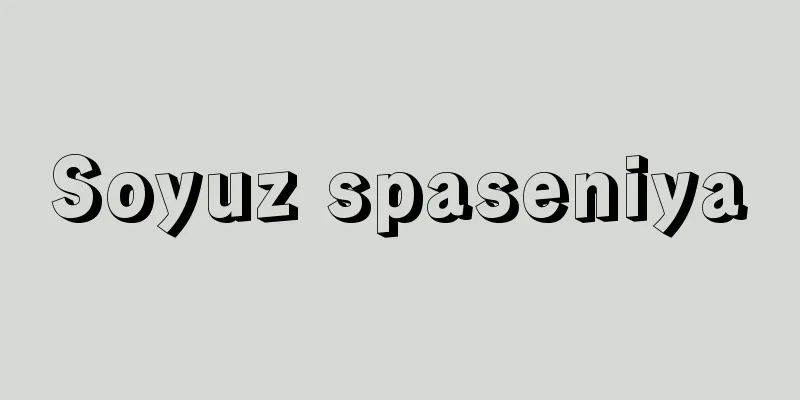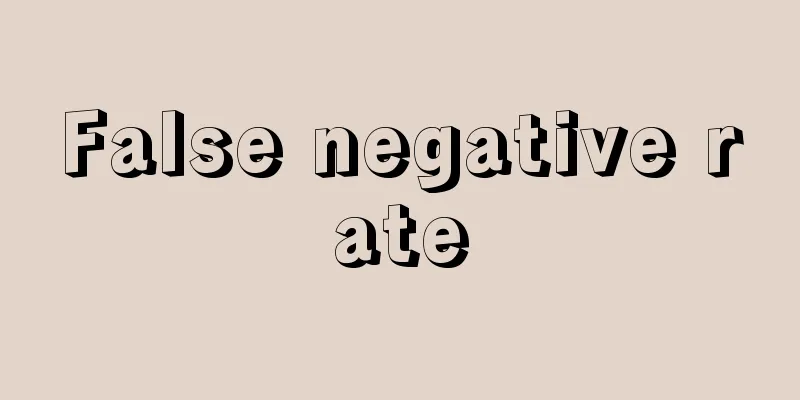Inter-War Period

|
It refers to the 20 years between the end of World War I and the outbreak of World War II. [Shunichi Fujimura] PeriodDuring this period, various problems left by the Russian Revolution, the First World War as a total war, the Versailles system, and other factors had a major impact not only on the political world but on the international community as a whole. Geographically, this impacted not only Europe, but also America and Asia, and temporally, there was a stark contrast between the early 1920s and the late 1930s. For this reason, these are often discussed separately as problems of the 1920s and problems of the 1930s. Also, between 1919, when the First World War ended, and 1939, when the Second World War began, there was a day called "Black Thursday" on October 24, 1929, which triggered the Great Depression that brought about major changes in all fields of politics, economy, society, and culture in the latter half of the interwar period. This is also a coincidence, but it divides the 1920s and 1930s beautifully and evenly. However, in both fields, the 1920s and 1930s should be viewed from the perspective of being discontinuous but continuous, and the two should not be discussed separately. This is where the unique period division known as the interwar period comes into existence. [Shunichi Fujimura] Political situationFirst, when we consider the structural elements of politics in the interwar period, we can say that imperialism, nationalism, capitalism, socialism, democracy, totalitarianism, internationalism, nationalism, and so on were involved in complex combinations, and that they developed rather slowly in the 1920s and noisily in the 1930s. More specifically, under the Versailles system in Europe and the Washington system in Asia, the so-called "haves" and "have-nots" among capitalist countries were divided into two camps, those who wanted to maintain the status quo and those who wanted to overturn it, and they were at odds with each other. Eventually, in the 1930s, they pushed their power forward and divided into the Axis camp and the democratic camp, which ultimately led to World War II, including the Pacific War. Furthermore, capitalist countries as a whole prioritized their own interests under the so-called uneven development, sacrificing the developing nations of colonies and semi-colonies. For this reason, various contradictions were often unilaterally imposed on the less developed regions. However, this awakened nationalism in underdeveloped regions such as Korea, China, India, Egypt, and Turkey, while the developed countries were fatigued by the challenge from the nationalists. Furthermore, the class conflicts in each country, which began with the Russian Revolution, developed into revolutionary and counter-revolutionary class struggles within each country or across multiple countries. It is true that this class struggle brought about a temporary rise in socialist forces centered on the working class. However, throughout the interwar period, there were significant fluctuations in the rise and fall of people's democratic forces, and the role of the international communist movement centered on Comintern in this is one of the issues that remains unresolved. Regardless of that, the rise of the working class during the interwar period also increased the forces of fascism as a counter-revolution. This was particularly evident in Italy, Austria, Germany, and France, but similar phenomena were also seen in Eastern European countries such as Bulgaria, Poland, and Hungary, and in Southern European countries such as Portugal and Spain. After the First World War, democracy was introduced as the basic principle of the international community, but on the other hand, it created a situation of mass society, which could easily lead to political instability. At the same time, it caused the corruption and obsolescence of politics, leading to the masses' distrust and indifference to politics. Thus, fascism emerged from this situation, calling for political renewal, and received the support of the masses as a pseudo-revolution. This was experienced in most European countries, including Italy, France, and Germany during the interwar period. In addition, as seen in the League of Nations, while there was hope for peacekeeping activities by supranational international organizations, nationalism, which turned its back on this internationalism, became mainstream in the 1930s. The same thing happened with socialism, which was originally supposed to be international, and it returned to nationalism in the form of one-country socialism and state socialism. [Shunichi Fujimura] Interwar cultureThe problems of the interwar period were not limited to the political world. Another characteristic of the interwar period was strongly manifested in the worlds of literature, art, thought, science and technology. For example, it was during this period that the so-called Weimar culture blossomed like a kaleidoscope in the worlds of German music, art, theater, film, and architecture in the 1920s, centered around Berlin and Munich. A constellation of artistic activities unfolded, including twelve-tone music in composition, Neue Sachlichkeit in performance, the avant-garde and Expressionism in art, stage direction by Brecht and Reinhardt, the film of UFA, and the Bauhaus movement in architecture. In the academic world, Weber, the sociology of the Frankfurt School, phenomenology in philosophy, Gestalt psychology, and physics centered around the University of Göttingen were all epoch-making. However, the culture of the 1920s had a strong cosmopolitan character, which did not sit well with the general public of Germany, who were prone to narrow-minded patriotism, and by the 1930s it had become reactionary and had strengthened nationalistic tendencies. It was Nazi leaders Hitler and Goebbels who labeled Weimar culture as decadent, but behind them were tens of millions of Germans who applauded it. A similar situation was seen in France. In the 1920s, the movements of Fauvism, Dadaism, and Surrealism shone brightly in the world of literature and art, and Paris, the city of flowers, was also in full bloom in the fields of theater, music, film, and ballet. However, in the 1930s, this glorious French culture of the 1920s was suddenly thrown into political upheaval, and a side of it that had been hidden in the 1920s was revealed. This is symbolic of the fact that from the "Clarté" movement, which advocated anti-war and peace and internationalism in ideology in the 1920s, and the Surrealist movement, which challenged authority, Aragon, who later leaned toward communism, and Drieu La Rochelle, who transformed into an anti-communist and fascist, were born. It can be said that this truly shows the complex side of French society and culture in the interwar period. During the interwar period, America, as represented by Detroit and Hollywood, made full use of the best of science and technology. With abundant capital, automobiles, electrical appliances such as radios, washing machines, and refrigerators, telephones, and movies created an explosive boom, and the machine age spread to every corner of the countryside. However, in October 1929, that suddenly took a dark turn. In any case, it is often said that American society during the interwar period was a stark contrast between the conservatism of the 1920s and the innovation represented by the New Deal of the 1930s. However, it is not difficult to find innovation in the 1920s and conservatism in the 1930s. As evidence of this, we can cite the works of a group of writers, the so-called "Lost Generation," including Hemingway, Steinbeck, Caldwell, Faulkner, Dreiser, and Dos Passos, who looked skeptically at the machine and urban civilization of the 1920s and anticipated the collapse of American society in the 1930s. In this way, the problems that the interwar period presented were fundamentally rooted in the "crisis" that had existed since the end of the 19th century, and although they took on a significantly different form in the 1920s and 1930s, they were essentially continuous. Some of the problems that arose in the fields of politics and economics during the interwar period were significantly improved after the war, as a result of the horrific experiences and reflections that had taken place during World War II. However, it cannot be said that the issues raised by interwar thought and culture have been fully accepted even today, more than half a century later. This may be why there is still ongoing debate among historians and researchers. [Shunichi Fujimura] "Modern History, Volumes 1 and 2, by S. Neumann, translated by Somura Yasunobu (1956, Iwanami Shoten)" ▽ "International Relations Between the Two World Wars, by E.H. Carr, translated by Eto Shinkichi et al. (1968, Shimizu Kobundo)" ▽ "Weimar Culture, by Peter Gay, translated by Itozu Juzo (1970, Misuzu Shobo)" ▽ "Iwanami Lecture Series on World History 26: Modern Times 3 - The 1920s" and "Iwanami Lecture Series on World History 28: Modern Times 5 - The 1930s" (1970, 1971, Iwanami Shoten)" ▽ "People Who Lived in Weimar Culture, by Walter Laqueur, translated by Waki Keihei et al. (1980, Minerva Shobo)" ▽ "Europe - The 1930s," edited by Kono Kenji (1980, Iwanami Shoten)" ▽ "Europe Between the Two World Wars" by Keizo Ikumatsu (1981, Sanseido)" ▽ "Interwar International Political History" by Takashi Saito (Iwanami Zensho) ▽ "Intellectuals and Politics" by Keihei Wakita (Iwanami Shinsho) ▽ "France in the 1920s" by Toshiaki Yamaguchi (Chuko Shinsho) [Chronology] |Source: Shogakukan Encyclopedia Nipponica About Encyclopedia Nipponica Information | Legend |
|
第一次世界大戦の終了から第二次大戦の勃発(ぼっぱつ)に至る20年間をいう。 [藤村瞬一] 時期区分この期間には、ロシア革命、総力戦としての第一次大戦、ベルサイユ体制などが残したさまざまな問題が、単に政治の世界のみならず、国際社会全般に大きな影響を及ぼしていた。それは地域的にもヨーロッパだけでなく、アメリカ、アジアなどにも及び、また時期的には前期の1920年代と、後期の30年代では著しい対照をなしていた。このため1920年代の問題、30年代の問題として別個に論じられることが多い。また第一次大戦終了の19年と、第二次大戦勃発の39年の中間点に、「暗黒の木曜日」といわれた29年10月24日があり、これを端緒とする世界大恐慌が戦間期後半の政治、経済、社会、文化のすべての分野を大きく変化させた。これも偶然とはいえ、みごとに均等に20年代と30年代を区分している。しかしいずれの分野においても、20年代と30年代とは、非連続的ではあるが連続的という観点からとらえるべきで、両者を切り離して論じるべきでない。ここに戦間期という独自の時期区分が成立するわけである。 [藤村瞬一] 政治状況まず戦間期の政治上の構造的要素について考えると、帝国主義、民族主義、資本主義、社会主義、民主主義、全体主義、国際主義、国家主義などがあり、これらが複雑に結合しつつ、1920年代はやや緩慢に、30年代は喧騒(けんそう)裏に進展したといえる。より具体的には、ヨーロッパにおけるベルサイユ体制、アジアにおけるワシントン体制の下で資本主義諸国間の、いわゆる「持てる国」と「持たざる国」とが、現状維持と現状打破の二派に分かれて相克し、やがて30年代に入って力を前面に押し立てて、枢軸陣営と民主主義陣営に二分して抗争、その結末が太平洋戦争を含む第二次大戦にほかならなかった。また資本主義国全体としては、発展途上にある植民地、半植民地の諸民族を犠牲にする、いわゆる不均等発展の下で、自国の利益を最優先とした。このため、さまざまな矛盾は、一方的に後進地域に押し付けられるのが常であった。しかし、これは、後進地域である朝鮮、中国、インド、エジプト、トルコなどで民族主義を覚醒(かくせい)させ、逆に先進諸国は民族主義の側からの挑戦で、疲労を蓄積する原因となった。さらにロシア革命を先駆とする各国の階級対立は、それが一国内あるいは多国間を横断する革命・反革命の階級闘争へと発展した。この階級闘争が、労働者階級を中心とする社会主義勢力の一時的高揚をもたらしたことは事実である。しかし戦間期を通じて、人民民主主義勢力の高揚と退潮には著しい起伏があり、これにコミンテルンを中心とする国際共産主義運動がどのような役割を果たしたのか、いまなお評価が定まらない問題の一つである。それはさておき、戦間期の労働者階級の台頭は、同時に、反革命としてのファシズム勢力をも増大させた。それはイタリア、オーストリア、ドイツ、フランスにおいて顕著に現れたが、それ以外にブルガリア、ポーランド、ハンガリーなど東欧の諸国、ポルトガル、スペインなど南欧の諸国においても同質の現象がみられた。 また第一次大戦後、国際社会の基本理念として導入されたデモクラシーは、一方で大衆社会状況をつくりだし、ややもすれば政治の不安定につながっていった。同時にそれは政治の腐敗、陳腐化として、大衆の政治不信と無関心を招くこととなった。かくて、こうした状況のなかから、政治の刷新を掲げてファシズムが登場し、疑似革新として大衆の支持を受けるのである。このことは、戦間期のイタリア、フランス、ドイツをはじめ、ほとんどのヨーロッパの国で体験する。このほか国際連盟にみるように、超国家的な国際機関による平和維持活動が期待される一方で、こうしたインターナショナリズムに背を向けるナショナリズムが1930年代には主流となった。このことは、本来インターナショナルであるはずの社会主義においても同様で、一国社会主義、国家社会主義としてナショナリズムに回帰した。 [藤村瞬一] 戦間期の文化戦間期の問題は、このような政治の世界だけにあったのではない。むしろ戦間期のもう一つの特徴は、文学、芸術、思想、科学技術などの世界に強く現れていた。たとえば、ワイマール文化とよばれて、1920年代のドイツの音楽、美術、演劇、映画、建築などの世界で、ベルリン、ミュンヘンなどを中心に万華鏡のように花開いたのもこの時期である。作曲における十二音主義、演奏における新即物主義、美術での前衛派、表現主義、ブレヒト、ラインハルトらの舞台演出、ウーファの映画、建築のバウハウス運動など、満天の星座のような芸術活動が展開された。また学問の世界でもウェーバー、フランクフルト学派の社会学、哲学における現象学、ゲシュタルト心理学、ゲッティンゲン大学を中心とする物理学など、いずれも一時期を画するものであった。しかし20年代の文化が、コスモポリタニックな性格を強くもっていたため、ややもすれば偏狭な郷土愛主義に陥りがちなドイツの一般大衆になじめず、30年代に至って反動化し、民族主義的な志向を強めるのである。ワイマール文化を退廃文化ときめつけたのは、ナチスの指導者ヒトラーやゲッベルスであったが、背後にはこれに喝采(かっさい)を送る数千万のドイツ国民がいたのである。 同様な事情はフランスにもみられた。1920年代のフランスでは文学、美術の世界でフォービスム、ダダイズム、シュルレアリスムの運動が光彩を放っており、演劇、音楽、映画、バレエなどの分野でも、花の都パリとして大輪の花を咲かせていた。こうした輝ける20年代のフランス文化も、30年代に入ると、一転して政治の激動のなかにほうり出され、20年代には隠されていた一面を明るみに出す。それは、20年代に反戦・平和と、思想のインターナショナリズムを掲げた「クラルテ」運動と、権威に戦いを挑んだシュルレアリスムの運動のなかから、のちにコミュニズムに傾斜するアラゴンと、反共・ファシストに変貌(へんぼう)するドリュ・ラ・ロシェルが生まれたことに象徴的である。まさに戦間期のフランス社会、フランス文化のもつ複雑な一面を現しているといえよう。 戦間期に、科学技術の粋を駆使したのは、デトロイトとハリウッドに代表されるアメリカであった。自動車、ラジオ・洗濯機・冷蔵庫などの電化製品、電話、映画などが、豊富な資本力を背景に爆発的なブームをつくりだし、農村の隅々まで機械の時代を浸透させたのである。しかしそれは1929年10月を境として、一挙に暗転するのである。いずれにせよ戦間期のアメリカ社会は、20年代の保守主義、30年代のニューディールに代表される革新主義が好対照をなす、とよくいわれる。しかし20年代にも革新性を、30年代にも保守性をみいだすことは困難でない。そのことの証左として、20年代の機械文明と都会文明に懐疑のまなざしを向け、30年代のアメリカ社会の崩壊を先取りしたヘミングウェイ、スタインベック、コールドウェル、フォークナー、ドライサー、ドス・パソスら一群の作家たち、いわゆる「失われた世代」の諸作品をあげることができよう。 このように、戦間期が示した諸問題は、基本的には19世紀末以来の「危機」に根ざすものであって、1920年代、30年代では大きく形を変えたものの、本質的には連続性をもつものである。戦間期の政治、経済の分野で出された問題のいくつかは、第二次大戦という悲惨な経験と反省のなかから、戦後かなりの改善がなされるようになった。しかし、戦間期の思想、文化が問いかけた問題は、すでに半世紀以上経た今日もなお、十分に受け止められたとはいいがたい。歴史家、研究者の間で、いまだに論議が絶えないのも、そこに理由があるからであろう。 [藤村瞬一] 『S・ノイマン著、曽村保信訳『現代史』上下(1956・岩波書店)』▽『E・H・カー著、衛藤瀋吉ほか訳『両大戦間における国際関係史』(1968・清水弘文堂)』▽『ピーター・ゲイ著、到津十三男訳『ワイマール文化』(1970・みすず書房)』▽『『岩波講座世界歴史26 現代3――1920年代』『岩波講座世界歴史28 現代5――1930年代』(1970、1971・岩波書店)』▽『ウォルター・ラカー著、脇圭平ほか訳『ワイマル文化を生きた人びと』(1980・ミネルヴァ書房)』▽『河野健二編『ヨーロッパ――1930年代』(1980・岩波書店)』▽『生松敬三著『両大戦間のヨーロッパ』(1981・三省堂)』▽『斉藤孝著『戦間期国際政治史』(岩波全書)』▽『脇圭平著『知識人と政治』(岩波新書)』▽『山口俊章著『フランス1920年代』(中公新書)』 [年表] |出典 小学館 日本大百科全書(ニッポニカ)日本大百科全書(ニッポニカ)について 情報 | 凡例 |
<<: Precambrian Period - Senkanburi Ajidai (English spelling) Precambrian
Recommend
Ukarebouzu - Ukarebouzu
Kabuki dance piece. Kiyomoto (originally the Tokiw...
Asimidel
…There are many prehistoric rock paintings. The m...
Rei-sen (gratuity money)
〘noun〙① Money used to give a gift. Gifts. ※Daijo-i...
Shinshinotsu [village] - Shinshinotsu
A village in Ishikari District, Ishikari Subprefec...
Vyakarana (English spelling)
…In contrast, there is the Smṛti (sacred traditio...
That person
[1] [Collocation] ① Refers to a person who was men...
Comstock, Anthony
Born March 7, 1844 in New Canaan, Connecticut Died...
Forestry tax system - forestry tax system
The types of taxes related to forestry include nat...
Meme-dake - Just lick
...A double volcano located in eastern Akita Pref...
Mol
...On the other hand, from the second half of the...
Palus Maeotis (English spelling) PalusMaeotis
The Black Sea is an embayment in the northeastern...
performance review
... That is, first the word "merit rating,&q...
Khujand
A city in northwestern Tajikistan. It is located i...
Shozo Tanaka
A politician and social activist of the Meiji per...
Sofa - Sofa (English spelling)
From a functional standpoint, chairs can be divid...






![Saba [river] - Saba](/upload/images/67cbad9b45dc0.webp)


